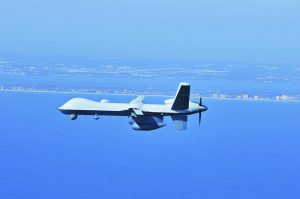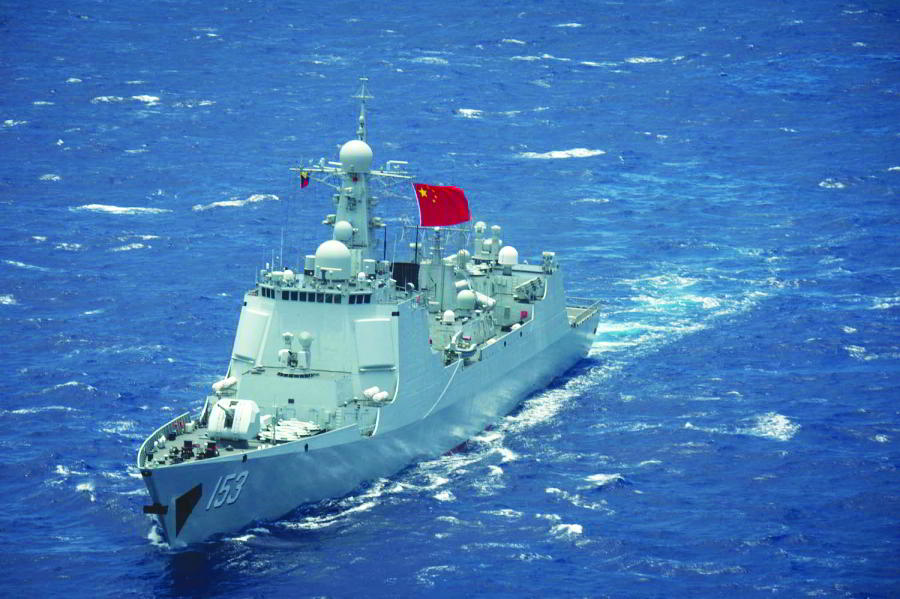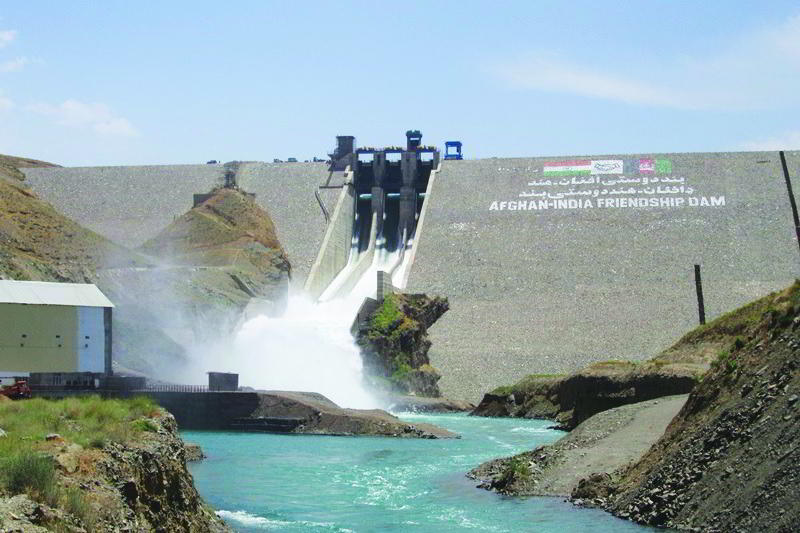Above: US Defence Secretary Jim Mattis with Prime Minister Narendra Modi in New Delhi. Photo: PIB
As America transfers high-end military technology to India, it wants it to take on a greater role in the Pacific Ocean. A new equation is taking shape in Asia with China, Pakistan and Russia ranged against the US, India, Japan and South Korea
~By Seema Guha
Enhanced Indo-US defence co-operation got a fresh boost with the visit of US defence secretary Jim Mattis recently. Though no major announcements were made during this visit, the first by a senior Trump administration official, it is a fact that last year the US acknowledged that India was now a major defence partner. Delhi may not become an ally in the way Japan or South Korea or any of the NATO countries are, but if co-operation gathers steam, it will be a tectonic change.
This will affect not just South Asia, but change the strategic dimension of the larger Asia-Pacific region which is now dominated by the US and China. None of this will be apparent immediately but will evolve over the next decade or more.

India has already bought weapons worth $15 billion over the last ten years. Russia, the main supplier of Indian arms all through the Cold War, is gradually being replaced by the US and Israel. The US decision to supply 22 Sea Guardian drones to enhance India’s naval surveillance in the Indian Ocean was announced during Prime Minister Narendra Modi’s meeting with President Donald Trump in June. China’s naval ships and submarines prowl the Indian Ocean constantly and these drones will help the Indian Navy to keep a close watch on the Chinese. India is the first non-NATO country to be given the drones by the US.
Former foreign secretary Lalit Mansingh told India Legal: “Yes, Indo-US defence co-operation is very much in focus, especially as for over 20 years, Washington had denied us all military technology. The nuclear deal changed the parameters of relations, and today, there is robust co-operation and US willingness to transfer high-end military technology to India.”
He agrees that the unspoken part of the defence relationship is China. “The desire to balance China’s growing military and economic power in Asia by encouraging India was there from the time of George W Bush. If American focus is on balancing the power equation in Asia, India too wants the US as an insurance against China,’’ the former diplomat said.
KEEPING VIGIL
During his visit to India, Mattis had said: “We appreciate India’s leadership in the Indian Ocean and seek to work together to build a resilient regional architecture.” But the US would like India to do much more and jointly take responsibility to patrol the Asia-Pacific region. Together with Japan and East Asian nations, Washington would want India to throw its weight behind patrolling the Pacific Ocean where the Chinese navy is becoming more and more aggressive in staking its claims. In fact, the US Pacific Command chief Harry B Harris, had said last year that India and US were soon to patrol the Pacific waters.

That was quickly dismissed by the government. But this is what the new defence co-operation with America would mean in future. India will, in the next decade, be ready to join other US allies to ensure the freedom of navigation in the Pacific waters.
Even in Afghanistan, the US wants India to take on a greater role. Donald Trump, while announcing his new Afghanistan policy in August, said that India must shoulder more responsibility in stabilising that country. Defence minister Nirmala Sitharaman, however, made it clear that Delhi was not prepared to have boots on the ground in Afghanistan. In fact, India’s role would be more in the area of development and building of institutions. Neither the US nor India wants its soldiers in Afghanistan.
Mattis said as much when he remarked on his India visit: “We value India’s invaluable contribution to Afghanistan and welcome further efforts to promote Afghanistan’s democracy, safety and security.’’
Delhi is well aware that Afghanistan is averse to foreign soldiers on its soil, and does not wish to lose the goodwill it had garnered through various development projects in that country. That is a sure-fire way to win the hearts and minds of the Afghan people.
SWAPPING GAME
However, this new shift in the US policy in Afghanistan has got Pakistan worried. It has been pointing fingers at both India and Afghanistan for trouble in Baluchistan. Pakistan’s foreign minister Khawaja Muhammad Asif went one step further in trying to make the point. In a startling disclosure in New York last month, he said that the Afghanistan National Security Advisor (NSA) had offered to swap a terrorist accused in the Peshawar Army Public School attack in 2014 for alleged Indian spy Kulbhushan Jadhav. Afghanistan’s NSA and India’s foreign ministry spokesman denied the allegations. Jadhav, a 46- year old former naval officer, was sentenced to death by a military court in Pakistan this April on charges of encouraging terror strikes inside Pakistan.

What could be the reason for Pakistan’s foreign minister to talk of a swap? At a time when Trump has publicly declared that Pakistan has been playing a double-game, and has not done enough to fight terror, Islamabad would like to paint India with the same brush. So, the world which takes whatever Pakistan says with a large doze of salt is now being told that a man like Jadhav, responsible for trying to destabilise Pakistan, is working not just for India but with the active connivance of Afghanistan. By bringing in the Afghan NSA, Asif has implicated both India and Afghanistan.
According to Rana Banerji, a retired bureaucrat in the Cabinet Secretariat, and an expert in intelligence and security related matters, Asif’s statement “was largely for effect and an attempt to please the Deep State. He may have got instructions from the army top brass to bring up the issue in New York. One thing is certain, if India were to bargain for Jadhav, it certainly would not be through the Afghans. I, for one, don’t believe Jadhav was one of our boys.”

A former IB official who did not wish to be named said that Asif’s statement was meant to convince the Americans about the perfidy of India and Afghanistan. “It is unheard of for a foreign minister to make such an assertion in a public platform. I don’t know what his motive was, but it backfired with Afghanistan and India denying it. I certainly don’t believe him,” he said.
Pakistan’s attempts to discredit India and Afghanistan are likely to continue as the new equations in Asia—China, Pakistan, Russia—ranged against US, India, Japan and South Korea—gradually take shape.


